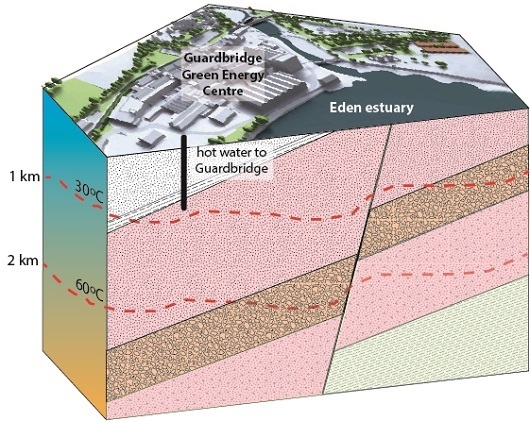Fife could yet become the focal point for plans to heat homes and businesses around Scotland using warm water recovered from rocks deep below the ground.
A Scottish Government-funded project has looked into the feasibility of using the largely untapped resource to deliver renewable heat at a site in Guardbridge in a cost effective manner.
With that in mind, researchers have now recommended that the initiative should be taken to the next stage – which would see a business case to explore for geothermal heat drawn up and could even lead to the drilling and testing of a well.
And while the study concedes that the viability of extending any heating system beyond the Guardbridge Energy Centre appears to be “uneconomic” at this time, it is thought the technological developments and lessons arising from any Fife project could be used elsewhere to great effect.
However, finance is set to be the main stumbling block – with no decision on funding to help progress the project likely to come until well after this week’s Scottish Parliament elections.
The University of St Andrews, which operates the £25 million Guardbridge Energy Centre, was a lead partner in the study, which also brought together teams from the British Geological Survey, Ramboll, Town Rock Energy Ltd, Fife Council, and Resource Efficient Solutions Ltd.
Dr Ruth Robinson, the lead for the geothermal feasibility project at the University of St Andrews, said: “The feasibility project investigated if there is a business case to explore for geothermal heat, and if feasible, the technological developments arising out of this project could be used for similar projects across Scotland.
“The findings based on one borehole are promising and certainly merit further investigation.”
An evaluation into the Guardbridge site showed a “potentially viable scheme both technically and economically”, although it noted there would be a “low return” in the base case.
Development of a wider district heating network which could heat homes in Leuchars and Balmullo had been looked at, but the study concluded that a single well would not provide sufficient heat to expand the network beyond the Guardbridge site.
However, the report confirmed that the location of the Guardbridge project is “ideal” for producing critical data on the most productive Hot Sedimentary Aquifers in the Central Belt of Scotland and could be used to “significantly de-risk” other HSA geothermal exploration projects.
It therefore recommends taking the project further, firstly by conducting a non-invasive geophysical survey of Guardbridge and the surrounding area to identify where boreholes could be made before then potentially drilling a well.
Any progress to an exploration phase will most likely require an Environmental Impact Statement and assessments from Scottish Natural Heritage and Fife Council, along with planning permission approval and necessary licenses from Fife Council and SEPA, as well as permission to drill under any land that is not part of the Guardbridge site.
Having said all that, however, further funding to develop the project is pivotal – and remains uncertain.
Preparatory work to procure a rig, draw up plans and secure permissions could take at least six months and incur planning costs of up to £50,000, while a test bore will cost between £100,000 to £450,000.










